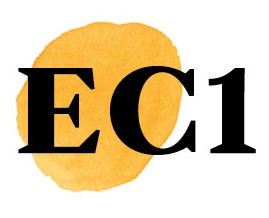Almost half of Londoners would opt for public transport over driving if fares were lower, new polling has revealed.
By Kumail Jaffer, Local Democracy Reporter

Almost half of Londoners would opt for public transport over driving if fares were lower, new polling has revealed.
The capital has some of the highest travel fares in Europe and is likely to continue to do so after ministers order City Hall to impose above-inflation rises every year until 2029.
But new data suggests that 49 per cent of people would be willing to swap their car for the underground if the cost of public transport was reduced.
The survey from Savanta and the Centre for London think tank, seen by the Local Democracy Reporting Service (LDRS), also indicates that over a third of Londoners would choose public transport if it was less crowded, safer and more reliable than it currently is.
Increasing the accessibility of public transport was also popular, with 34 per cent of respondents saying it would make them use public transport more, while 19 per cent wanted more access to toilets on the network.
Meanwhile, a fifth suggested that it was the stick, rather than the carrot, in the form of punishing motorists with increased road user charges, that would see them switch to public transport.
There are currently around 2.6million cars registered in London. While ownership is lower than other regions of the UK, there has been a concerted effort from City Hall to promote the use of public transport over private vehicles to help the environment and reduce congestion for buses, bikes and taxis.
The findings prompted calls for increased transport links within London, especially those connecting outer boroughs.
Daniel Reast, Senior Researcher at Centre for London, told the LDRS: “To tackle the issue, we need to understand why people drive. While the data shows an increase in car ownership across the capital, it hides regional divides. Central London has seen a decrease, while areas in the East have seen a sharp increase.
“As families have moved to Outer London, particularly to the East, so has the use of cars. It’s the ease and convenience of hopping in a car with children, to pop to the shops or take the kids to school, as well as mobility requirements, which can mean Londoners feel the need to own their own vehicle.
“London has had great success in getting people out of their cars and travelling on trains, buses, bicycles or on foot. But to reach the Mayor’s goal of 80 per cent of journeys in London taken on public or active transport by 2041, there’s a long way to go.
“A third of Londoners listed comfort and safety, and quicker, more reliable journeys as the reasons they would more readily choose public transport.
As we look towards sustainable solutions, it’s about creating a nuanced approach to our public transport. Increasing the availability of public transport, particularly orbital routes which allow people to move between local areas – rather than just in and out of Central London – is vital in Outer London.
“If the Mayor wants to see Londoners choosing to get out of their cars and onto public transport, for the benefits of public health and decarbonising the city, we need an Outer London Transport strategy.”
A number of new proposed transport projects, including the Bakerloo Line extension and West London Orbital, have the potential to connect more parts of London by rail, but are yet to receive the funding needed to make them a reality.
A separate survey conducted by Savanta and the Centre for London found that a significant percentage of Londoners backed a ‘pay per mile’ charge in the capital and levying higher taxes on SUVs.
Simon Pirani of campaign group Fare Free Londontold the LDRS: “We welcome these survey results – we believe that making public transport free is a social justice measure and that it should help to encourage people to use it rather than their cars.
“These findings suggest that it definitely would have that effect in London and that would help us to move away from a car-centred transport system.
“In New York, Zohran Mamdani promised free bus travel in his campaign – it’s time this idea is looked at in London.”
A spokesperson for the Mayor of London that Sir Sadiq Khan is working to keep TfL fares “as low as possible”.
They told the LDRS: “By freezing bus and tram fares for the sixth time since 2016, Londoners continue to pay amongst the lowest bus fares in the UK.
“TfL fares set by the Mayor are around 9 per cent lower than if they had increased in line with National Rail fares since 2016, and 16 per cent lower than if they had risen in line with inflation. In addition, TfL offers a wide range of travel concessions, offering free and discounted travel to millions of eligible Londoners.
“The Mayor is pushing ahead with vital projects to improve public transport across the capital – delivering more step-free stations, Tube upgrades, zero-emission buses, express bus services, School Streets and Cycleways – as he continues working to build a better, fairer, greener London for everyone.”









